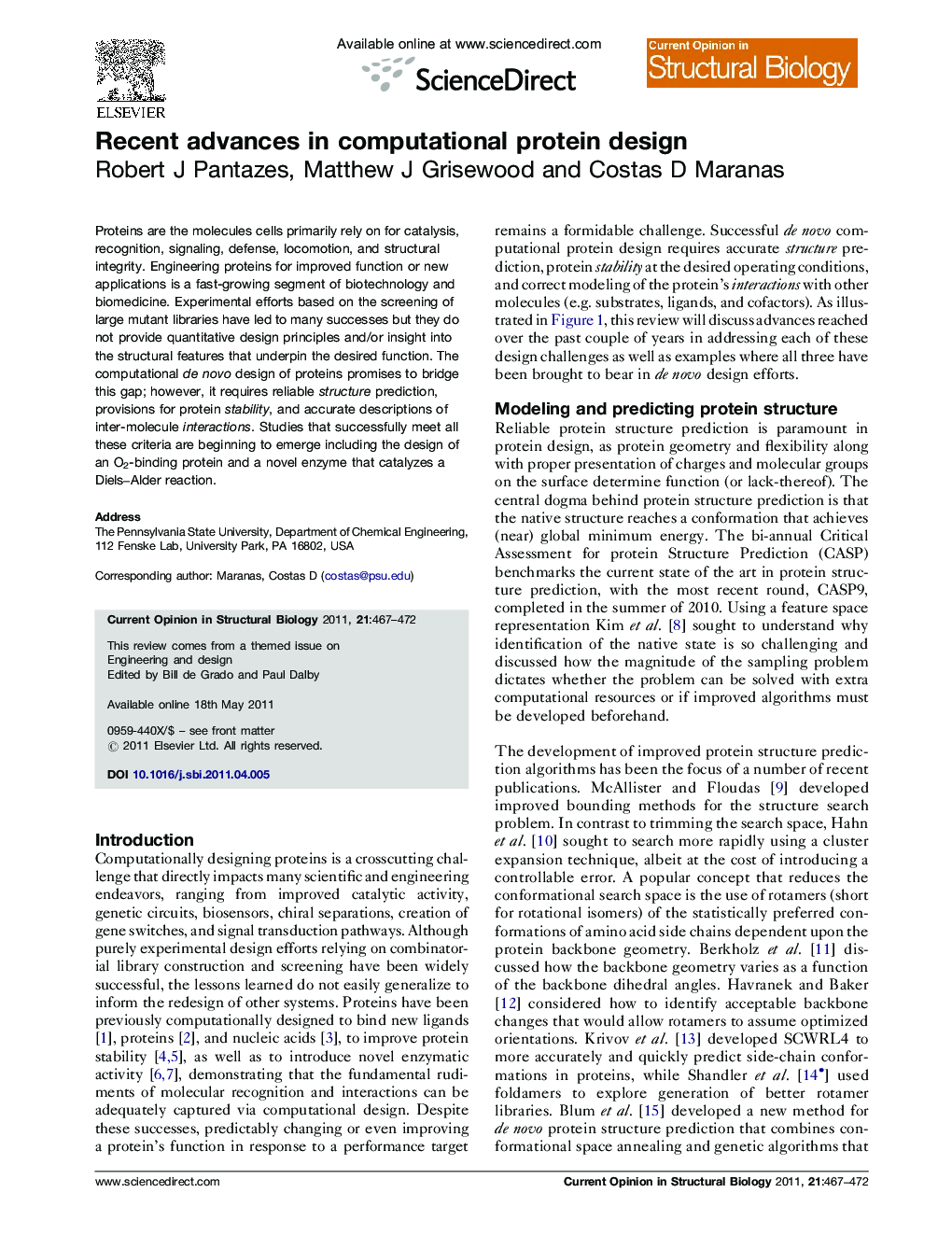| Article ID | Journal | Published Year | Pages | File Type |
|---|---|---|---|---|
| 1979327 | Current Opinion in Structural Biology | 2011 | 6 Pages |
Proteins are the molecules cells primarily rely on for catalysis, recognition, signaling, defense, locomotion, and structural integrity. Engineering proteins for improved function or new applications is a fast-growing segment of biotechnology and biomedicine. Experimental efforts based on the screening of large mutant libraries have led to many successes but they do not provide quantitative design principles and/or insight into the structural features that underpin the desired function. The computational de novo design of proteins promises to bridge this gap; however, it requires reliable structure prediction, provisions for protein stability, and accurate descriptions of inter-molecule interactions. Studies that successfully meet all these criteria are beginning to emerge including the design of an O2-binding protein and a novel enzyme that catalyzes a Diels–Alder reaction.
► Modeling of protein function hinges upon accurate structure prediction. ► Proteins must be stable at the desired operating conditions. ► Inter-molecule interactions dictate the specifics of protein function. ► Successful de novo protein design requires meeting multiple criteria.
